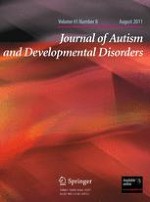01-08-2011 | Original Paper
Intention Perception in High Functioning People with Autism Spectrum Disorders Using Animacy Displays Derived from Human Actions
Gepubliceerd in: Journal of Autism and Developmental Disorders | Uitgave 8/2011
Log in om toegang te krijgenAbstract
The perception of intent in Autism Spectrum Disorders (ASD) often relies on synthetic animacy displays. This study tests intention perception in ASD via animacy stimuli derived from human motion. Using a forced choice task, 28 participants (14 ASDs; 14 age and verbal-I.Q. matched controls) categorized displays of Chasing, Fighting, Flirting, Following, Guarding and Playing, from two viewpoints (side, overhead) in both animacy and full video displays. Detailed analysis revealed no differences between populations in accuracy, or response patterns. Collapsing across groups revealed Following and Video displays to be most accurately perceived. The stimuli and intentions used are compared to those of previous studies, and the implication of our results on the understanding of Theory of Mind in ASD is discussed.
